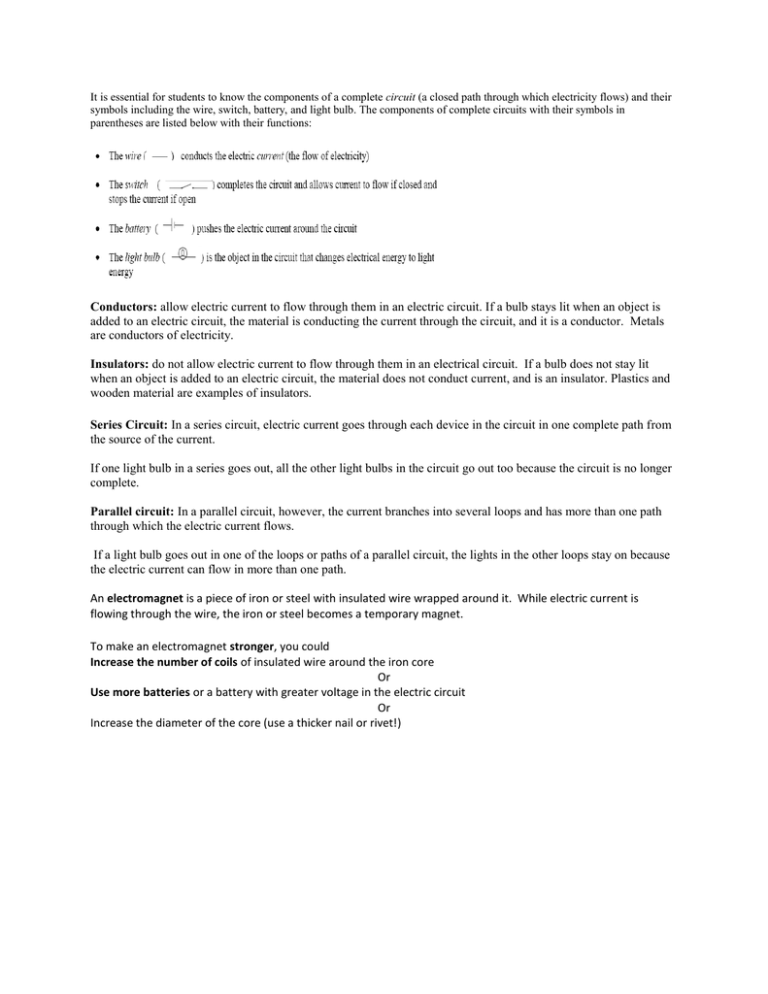Conductors: allow electric current to flow through them in an electric
advertisement

It is essential for students to know the components of a complete circuit (a closed path through which electricity flows) and their symbols including the wire, switch, battery, and light bulb. The components of complete circuits with their symbols in parentheses are listed below with their functions: Conductors: allow electric current to flow through them in an electric circuit. If a bulb stays lit when an object is added to an electric circuit, the material is conducting the current through the circuit, and it is a conductor. Metals are conductors of electricity. Insulators: do not allow electric current to flow through them in an electrical circuit. If a bulb does not stay lit when an object is added to an electric circuit, the material does not conduct current, and is an insulator. Plastics and wooden material are examples of insulators. Series Circuit: In a series circuit, electric current goes through each device in the circuit in one complete path from the source of the current. If one light bulb in a series goes out, all the other light bulbs in the circuit go out too because the circuit is no longer complete. Parallel circuit: In a parallel circuit, however, the current branches into several loops and has more than one path through which the electric current flows. If a light bulb goes out in one of the loops or paths of a parallel circuit, the lights in the other loops stay on because the electric current can flow in more than one path. An electromagnet is a piece of iron or steel with insulated wire wrapped around it. While electric current is flowing through the wire, the iron or steel becomes a temporary magnet. To make an electromagnet stronger, you could Increase the number of coils of insulated wire around the iron core Or Use more batteries or a battery with greater voltage in the electric circuit Or Increase the diameter of the core (use a thicker nail or rivet!)


